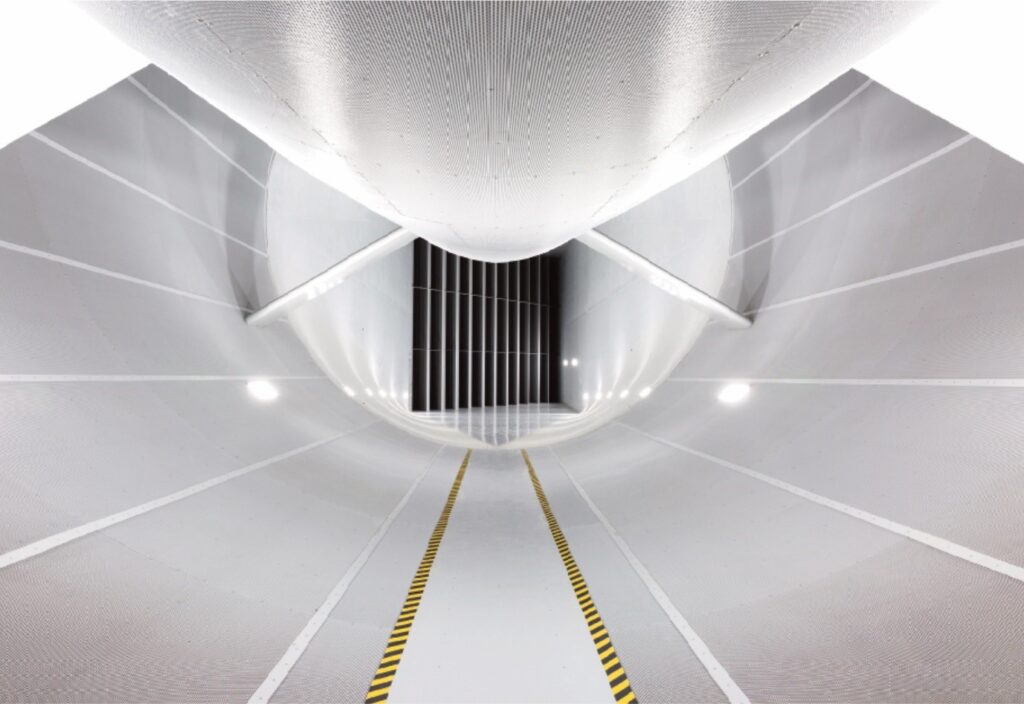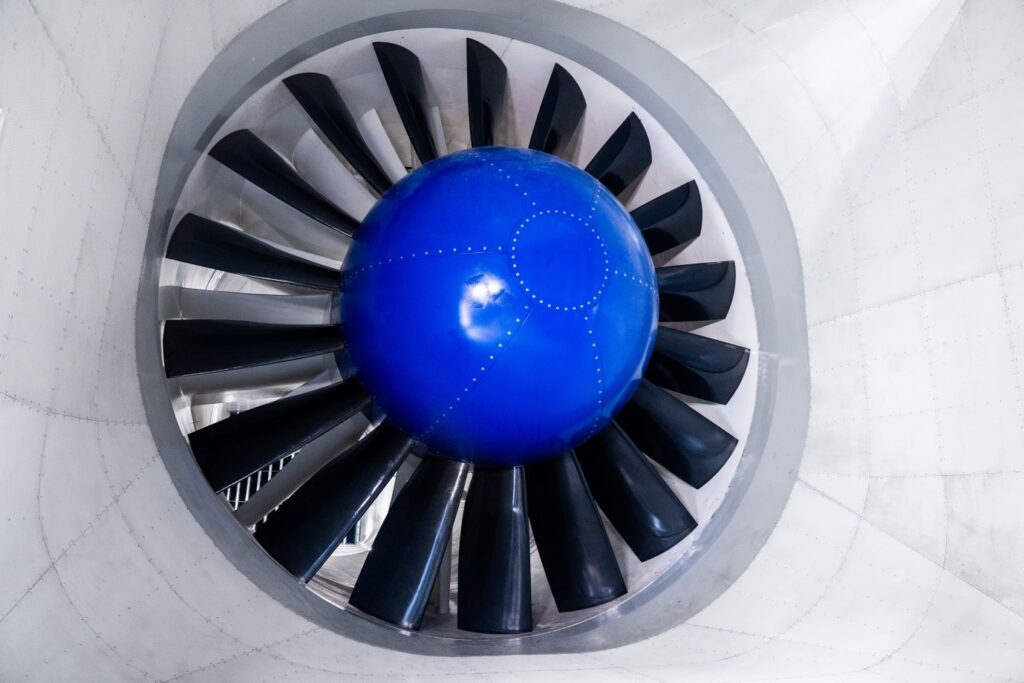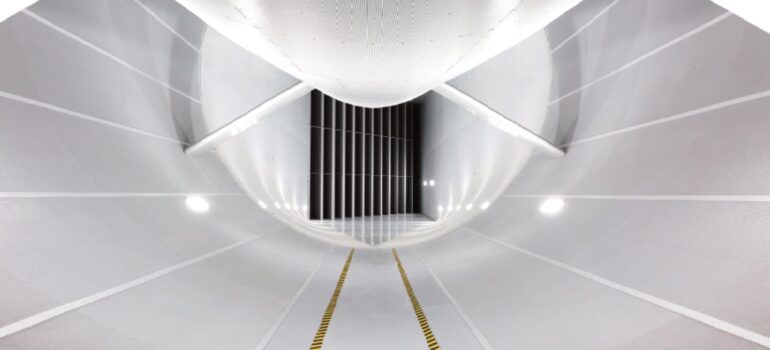Pursuing Air Flow Perfection: 90 Years of Wind Tunnel Innovation
TLT-Turbo have a long-standing tradition of supplying wind tunnels especially for the motor vehicle and aerospace industry. TLT-Turbo were among the first to focus on aero-acoustic wind tunnel fans. As a supplier for some of the world’s most prominent car manufacturers, TLT-Turbo aims to become renowned as a global leader in wind tunnel fans and systems through continual innovation and a deeply ingrained passion for performance.
The development of wind tunnel production at TLT-Turbo started with their ancestral company, Dinglerwerke, who built their first wind tunnel back in 1936. Decades later, the company now known as TLT-Turbo, would be responsible for some of the world’s most notable wind tunnel installations. “From the start we set out to establish a tradition of being pioneers and innovators in this field of ventilation as we recognized the significance of these systems for vehicle testing,” says Volker Szemskat, Vice President of TLT-Turbo.
TLT-Turbo’s first wind tunnel installation for the motor vehicle industry was built in 1940 for FKFS (Research Institute of Automotive Engineering and Vehicle Engines) in Stuttgart. It was a low speed wind tunnel designed for wind speeds of up to 72 m/s. This wind tunnel was later taken over by Daimler.
Testing vehicles in wind tunnels started with projects such as Peugeot’s passing a car through the Eiffel Wind Tunnel at the rue Boileau, in Paris in 1914. The goal was to gain information on how to modify the shape of models to decrease aerodynamic drag. Since then these types of tests have advanced significantly and today, they are becoming more and more relevant as a means of testing for reducing pollutant and noise emissions. “Even the smallest gain in the aerodynamic drag leads to a decrease in consumption of fuel,” Szemskat explains.
In total, over the past 90 years, TLT-Turbo have supplied around 70 wind tunnels and test stands, of which about 30 were delivered for the automotive industry. This includes more than 70 customized fans ranging from 100 kW to 88.000 kW with diameters from 1 to 15 meters. Among these are some of the most notable facilities in the world – such as the ONERA (French Aerospace Center) Transonic Wind Tunnel S1 in Modane, France, being installed in 1949, with a 2-stage counter-rotating fan measuring 15 m in diameter with a drive power of 88.000 kW. This colossal fan remains to this day the largest wind tunnel fan in the world being in continuous operation since 1952.
Another example of the longevity of TLT-Turbo’s fans is the wind tunnel installed for Volkswagen in 1965. Its 9-meter diameter fan has been in operation in operation for over 50 years.
“The combination of our experience, with the field-proven performance and long operational life spans of these fans has made us a trusted supplier across the globe,” says Szemskat.

This status has been well maintained over the years with clients including Volkswagen, Ferrari, Ford and Audi coming back to TLT-Turbo for repeat orders.
TLT-Turbo’s 145 years of experience in ventilation design and supply has contributed to the innovations and new methods they have been able to apply to their wind tunnel designs. In 2010, TLT-Turbo supplied a fan for an aero-acoustic wind tunnel for the DLR (German Aerospace Center) which features a special blade and guide vane design for particularly low noise generation as well as composite material for the fan blades. Since then, this innovation has been applied to most of their automotive wind tunnel fans.
“Most often the development of innovations in the application of wind tunnels is guided by the needs of a particular client or the project itself. We need to think on our feet to come up with new approaches to solving challenges that arise as a project unfolds. This then informs future designs and installations and ensures that our offering is constantly evolving.”
Some of TLT-Turbo’s latest field-driven innovations include the application of their ‘Cut-off’ and ‘Lean/Sweep’ design that they have applied to their low speed aero-acoustic fan design to reduce blade tone and broadband noise. “We have also been working with the use of composite materials which has allowed us to apply 3D-geometry on the guide vanes which increases efficiency and overall performance,” Szemskat says.
The use of composite materials is also being applied in their current projects for the CAERi and CATARC automotive research institutes in China. These projects are currently in installation and commissioning phase.
For the past 12 twelve years, TLT-Turbo have changed their focus to the centerpiece of wind tunnels; the fan. “In the past, TLT-Turbo supplied turn-key wind tunnel solutions. From 2007, this offering changed to focus solely on the fan itself as the key component of a wind tunnel system. Our clients still benefit from our extensive experience and expertise in complete wind tunnel systems. This allows us to provide a tailored solution because we understand how the separate components interact with each other,” Szemskat reports.

“This gives us greater scope for customization. Every fan and its project planning is adapted to its specific installation. Stand-alone drive systems with local operation, control and monitoring systems and their connection to the parent digital control system also form part of our portfolio. Our experience with the supply and installation of turn-key wind tunnels means that we are able to recognize the significance of specific wind tunnel features to the design of the fan.”






